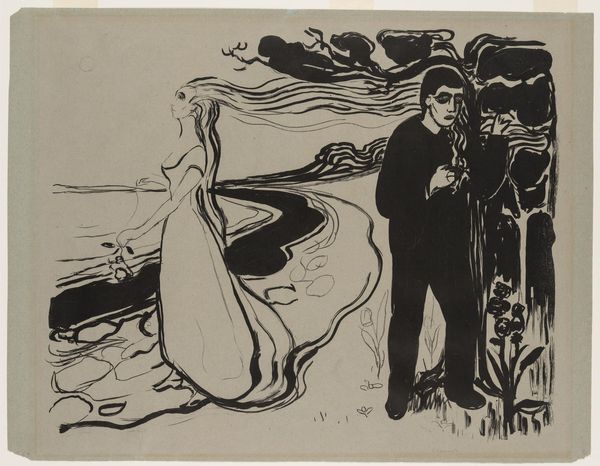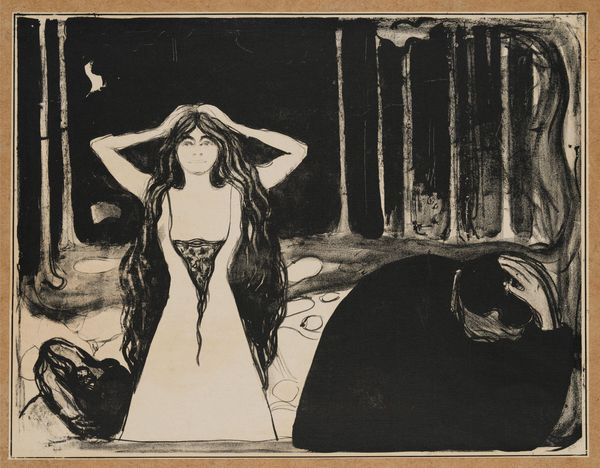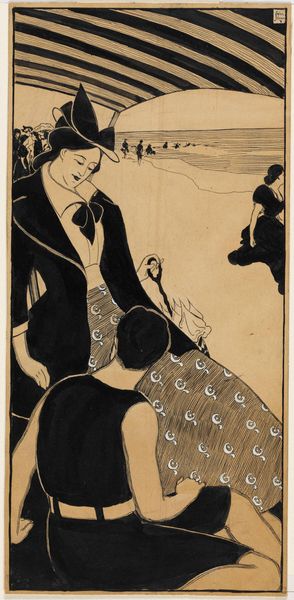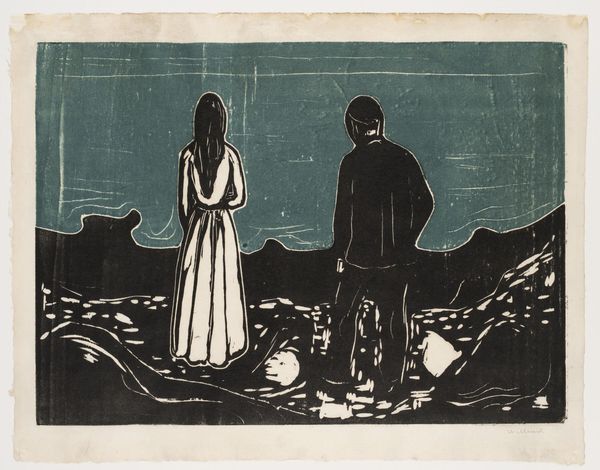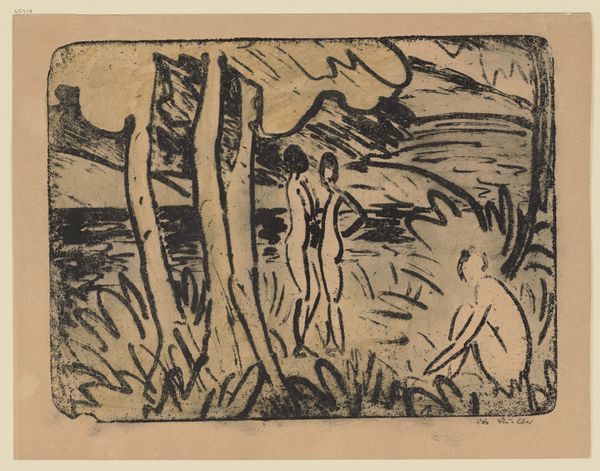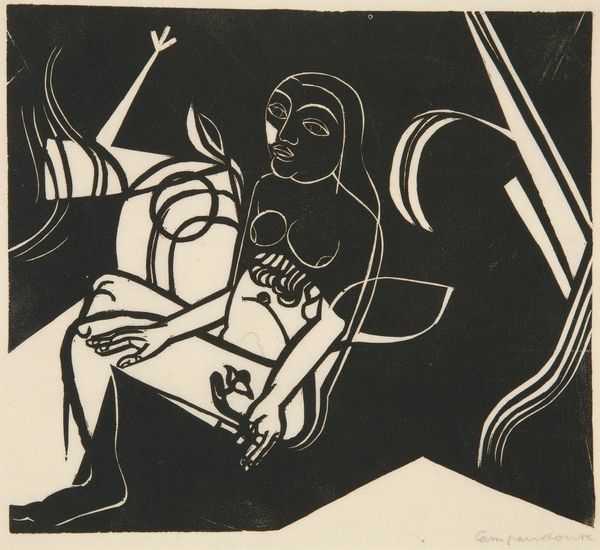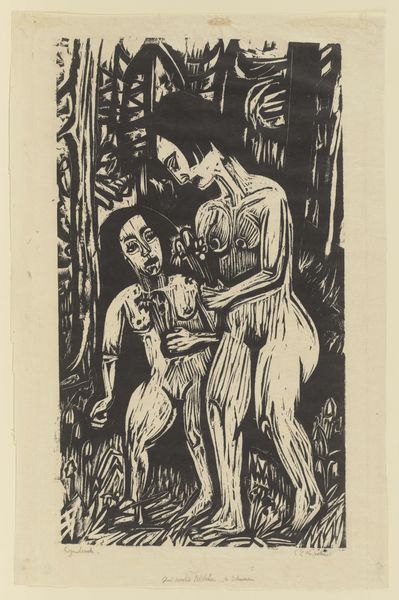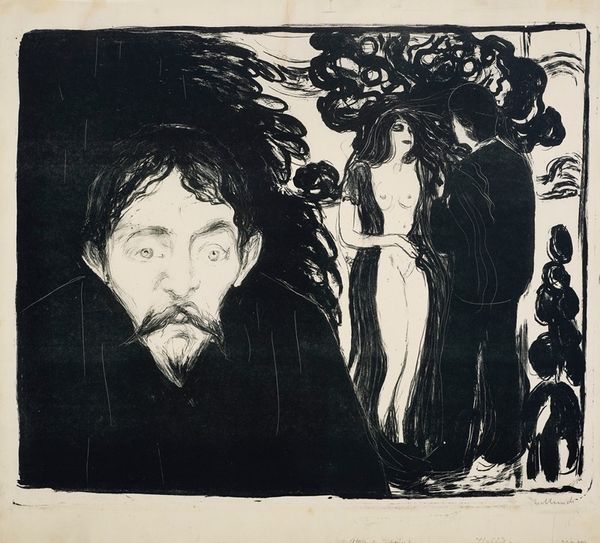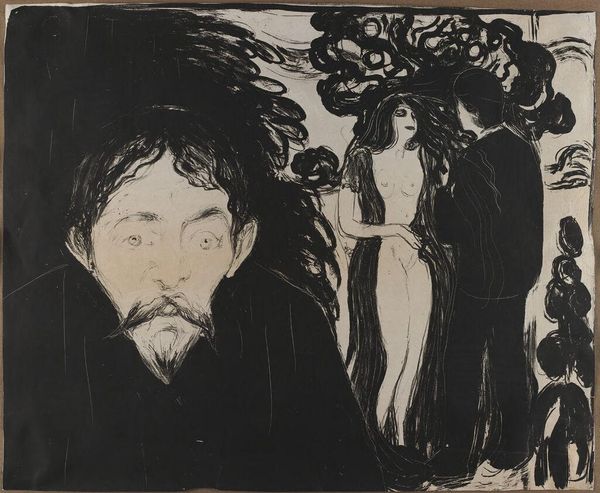
Dimensions: sheet: 29.4 Ã 41.7 cm (11 9/16 Ã 16 7/16 in.)
Copyright: CC0 1.0
Editor: Here we have Edvard Munch’s “Ashes I,” from around 1894, at the Harvard Art Museums. The stark contrast and slumped figure evoke a sense of despair. What underlying narratives do you find woven into this image? Curator: This piece is rich with symbolism. The woman, detached and ethereal, stands apart from the bowed man consumed by darkness. "Aske," or "Ashes," suggests what remains after passion or trauma. Can you see how the forest becomes a backdrop for a psychological drama, a cultural memory of loss? Editor: So, the ashes represent the aftermath of a relationship? Curator: Potentially. Consider the historical context: Munch’s own turbulent relationships. The image taps into archetypes of masculine shame and feminine power, resonating across time. The forest motif itself is laden with cultural symbolism of danger, mystery, and transformation. Editor: I hadn’t considered the forest in that way. It makes the image more complex. Curator: Exactly. It’s a visual encoding of shared human experiences. Hopefully, you learned how symbols evoke complex emotions. Editor: Indeed. The depth of historical context truly enriches the work.
Comments
No comments
Be the first to comment and join the conversation on the ultimate creative platform.
